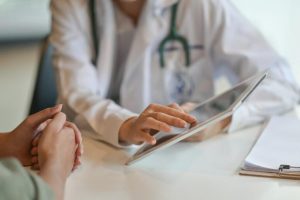Shortages of personal protective equipment such as face shields and masks have inspired architecture and design firms worldwide to use their skill sets to provide design and manufacturing capabilities to an often overwhelmed U.S. healthcare system.
Cornell University professor Jenny Sabin, director of Sabin Lab at the College of Architecture, Art and Planning (AAP), explained Operation PPE quickly grew to include not only labs working in computer science, mechanical engineering and other fields across campus that had 3D printers and laser cutters, but also architecture firms worldwide.
Through those networks, industry partners such as g-Create, a 3D printer manufacturer, and organizations such as the New York Stem Cell Foundation Research Institute and the faculty at Parsons also joined the effort.
“It has been an incredible effort and through this network of architects and makers, hundreds of printed visors and laser-cut shields were delivered directly to Weill Cornell Medicine in NYC,” she said. “There, the material goes through a sanitizing process and is then distributed to doctors, nurses, and healthcare professionals on the front lines.”
She noted most of those involved are all working in isolation. Some of those working brought their 3D printers from the labs to their homes, while the shop staff at AAP work in rotating shifts. They work alone, and sanitize equipment after every use.
“We have exchanged materials by dropping boxes at each other’s garages and doorsteps,” she said. “All are practicing safe social-distancing and safety measures. We have primarily communicated through a dedicated Slack channel, my lab website, and over email. It’s a bit strange to be engaged in such a meaningful collaboration with so many people who I have never met in person.”
Alvin Huang, founder and principal at Synthesis Design + Architecture and associate professor at the USC School of Architecture, is the leader behind USC Architecture’s “#OperationPPE” endeavor, a volunteer network of USC Architecture faculty, students, alumni, friends and others who are remotely 3D-printing personal protection equipment for medical professionals battling on the front lines of the ongoing COVID-19 pandemic.
He explained that what started as an open call to arms to USC Architecture faculty and students has since expanded to become a distributed network of volunteers and 3D printers that spans to all corners of Southern California and beyond.
“At this moment, our group consists of 207 volunteers with 200 3D printers distributed throughout Southern California, and growing,” he said. “In less than a week, we have printed 1,156 pseudo N95 face masks and 575 face shields.”
These pseudo N95 masks – backups that underscore the severity of the shortage – have been officially distributed to Keck Medicine, USC LA County Hospital, Children’s Hospital Los Angeles, and MLK Hospital in Watts.
“Though this gear has been tested and approved by Keck, it must be said that this is not true medical-grade equipment, and is the ‘back up to the back up,’ and has been labeled as a step above our doctors wearing handmade masks, bandanas, and socks,” Huang explained.
He said it currently takes about 3.5 hours to print a single mask, and a $30 spool of filament can produce around a dozen masks. They have received, or are in the process of receiving, funding from the mayor’s office, as well as $10,000 from the American Institute of Architects California Council.
In addition to the 3D printed components, the masks also require a HEPA filter insert, weather stripping at the edges to seal the perimeter, and elastic straps.
“We have been instructed not to assemble any of the parts, and are only being asked to deliver raw 3D-printed parts, as Keck will still need to sterilize all parts prior to assembly,” Huang noted.
The effort runs from small firms to some of the industry’s biggest global players – like Foster + Partners, led by Sir Norman Foster, designer of skyscrapers corporate headquarters across the globe.
To aid the fight against Covid-19, the firm has designed a general-purpose prototype face visor, suitable for cleaning and reuse, that is specifically aimed at fast mass production. The studio is sharing the design templates and material specifications as an open-source design asset.
The prototype visor, designed by a team of industrial designers, model-makers, architects and analysts, is made from three components: a visor made from 0.5 mm optically clear PETG (a Glycol Modified version of Polyethylene Terephthalate), an interlocking soft headband and a surgical-silicone rubber head strap that ties the two together.
Each visor can be cut from sheets in under 30 seconds, and the elements assembled in under a minute.
“For us, it’s not about being architects. It never has been about that,” Grant Brooker, Director, head of studio at Foster + Partners. “Our strength as a practice has always been to build a diverse team of many specialists, and for this we were led by our industrial designers, model-makers and analysts. It is our collective power that makes us best positioned to explore and make a contribution like this.”
Brooker explained it is “vital” to adopt an open source design approach.
“We can’t solve equipment shortages, but others – large-scale manufacturers and specialist design teams – can go far faster and further than us. We just wanted to question the status quo in a way that we would tackle a design challenge: ‘What if we stopped looking at 3D-printing technology and just focused on cutting machines? Could we deliver more and could we do it faster?’ We proved that we could.”
He explained that, with a single cutting machine and a small team, the firm could easily make 1,000 visor masks a day.
“We thought this approach was worth sharing with everyone,” Brooker said. “We also wanted to raise the question about cleaning and reuse – materials are scarce and demand is increasing so we think that designers should plan for reuse from the outset.”
Often overwhelmed, at times in disbelief and working through bouts of depression, Sabin said she tries to focus on the positive impact that this “tremendous network” of makers, architects, engineers, and designers, is making.
“To date, we have delivered over 10,000 protective face shields to our doctors, nurses and healthcare professionals on the front lines,” she said. “This experience has given me tremendous confidence in the power of people coming together to address extreme needs collaboratively across disciplinary boundaries.”






























